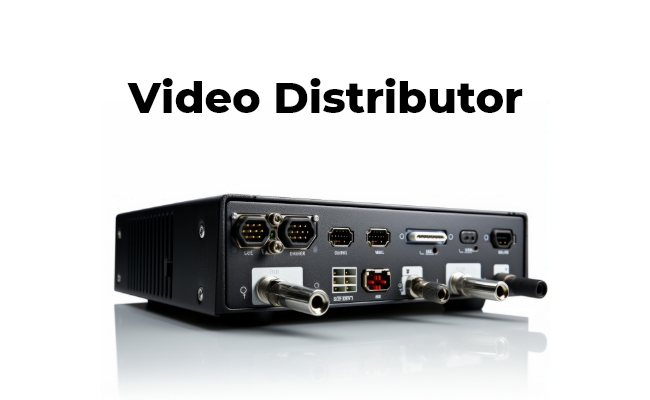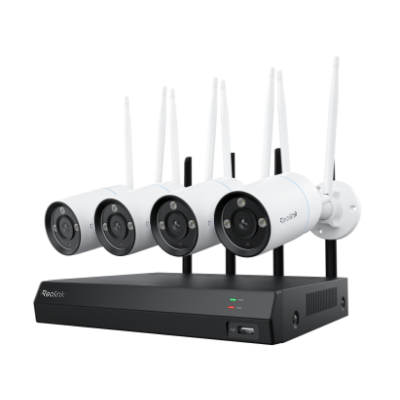Video Distributor: How to Maximize Content Reach?

Are you struggling to ensure that your video content reaches the widest possible audience? Whether you're a content creator, a business owner, or a media professional, the solution lies in harnessing the power of a distributor video.
A video distributor can make this dream a reality, opening up a world of possibilities for your video distribution strategy. In this comprehensive article, we'll explore the basis of video distribution devices and tell you how to maximize your content's reach.
- What is a Video Distributor?
- How does Multichannel Video Programming Distributor Work?
- Types of Video Distribution Devices
- Where to Use DVD Distributor for Video Distribution
- How to Choose the Right Distributors for Video Content?
- Traditional vs. Digital Video Distribution: What's the Difference?
- Integration of Security Cameras with Video Distributors
- FAQs
- Conclusion
What is a Video Distributor?
A video distributor is a hardware device that takes a single video input signal and duplicates it across multiple outputs. This allows you to display the same video content on multiple screens or devices simultaneously. These distributors are commonly used in scenarios where you need to share video content with a large audience or across multiple locations.
How does Multichannel Video Programming Distributor Work?
A multichannel video programming distributor (MVPD) is a specialized type of video distribution device designed to distribute multiple video channels or streams simultaneously. These devices are commonly used in cable and satellite television networks, as well as in commercial settings such as hotels, hospitals, and airports.
The virtual multichannel video programming distributor (vMVPD) is a modern version of the MVPD that operates over the Internet. Instead of using traditional cable or satellite infrastructure, vMVPDs deliver live and on-demand video content to users through streaming services.
Types of Video Distribution Devices
There are several types of distributors available in the market, each designed to cater to specific needs and applications. Here are some common types:
Video Splitter
A video splitter is a basic type that takes a single video input and duplicates it across multiple outputs. These devices are typically used for simple applications such as mirroring a video signal on multiple displays.
Video Switcher
A video switcher allows you to switch between multiple video inputs and route the selected input to one or more outputs. These devices are commonly used in live events, presentations, and broadcast environments.
Matrix Switcher
A matrix switcher that combines the functionality of a video switcher and a video splitter. It allows you to route any input to any output or even multiple inputs to multiple outputs simultaneously. Matrix switchers are often used in complex video distribution systems, such as those found in control rooms or large-scale video walls.
Distribution Amplifier
A distribution amplifier amplifies and distributes a single video input signal across multiple outputs. These devices are commonly used in situations where the video signal needs to travel over long distances or when there is a need to drive multiple displays from a single source.
Video Wall Controller
A video wall controller can be used to manage and control video walls. These video wall distributor devices allow you to combine multiple displays into a single, seamless video wall and distribute content across the entire wall or specific regions.
HDMI Splitter
An HDMI splitter specifically handles HDMI signals. It takes a single HDMI input and duplicates it across multiple HDMI outputs, allowing you to display the same content on multiple HDMI-enabled devices.
Where to Use DVD Distributor for Video Distribution
Here are some common use cases:
Home Theater
In a home theater setup, you will need these devices to distribute audio and video signals from a single source (e.g., Blu-ray player, media server) to multiple displays and speakers throughout the home.
Conference Room
Distributors for videos are essential in conference rooms and meeting spaces, where they can be used to distribute video signals from a single source (e.g., a laptop or a video conferencing system) to multiple displays, ensuring that everyone in the room can see the content clearly. The video conferencing cameras distributor can be important in corporate business meetings.
Education Facilities
In educational settings, such as classrooms and lecture halls, teachers may need to distribute video content from a single source (e.g., a teacher's computer or a document camera) to multiple displays, allowing students to see the content clearly from anywhere in the room.
Broadcasting and Production Studios
In the broadcasting and production industry, different distributors are used to distribute video signals from various sources (e.g., cameras, graphics systems, video servers) to multiple monitors, projectors, and other displays within the studio or control room.
Digital Signage
These distributors play a crucial role in digital signage applications, where they are used to distribute video content from a single source to multiple displays located in different areas, such as retail stores, airports, or public spaces.
Security and Surveillance
In security and surveillance systems, video distributors can be used to distribute video signals from multiple cameras to multiple monitoring stations or recording devices, ensuring that all relevant personnel can access and view the footage as needed.
4K 8MP Wire-Free 4G LTE PT Battery Camera
4K 8MP; Smart Detection; 355° Pan & 140° Tilt; Battery/Solar Powered; Color Night Vision; Smart Real-Time Alert.
How to Choose the Right Distributors for Video Content?
When selecting a distributor for your specific needs, there are several key features and factors to consider:
Resolution and Format Support
Ensure that the device supports the resolution and video formats you plan to use. Common resolutions include 1080p, 4K, and even 8K for high-end applications. Additionally, check for support for various video formats such as HDMI, DisplayPort, and VGA.
Number of Inputs and Outputs
Consider the number of video sources and displays you need to connect. Distinct distributors are available with varying numbers of inputs and outputs, so choose one that meets your requirements while allowing for future expansion if necessary.
HDCP Compliance
If you plan to distribute protected content, such as Blu-ray or streaming videos, ensure that the one you've chosen is compliant with High-bandwidth Digital Content Protection (HDCP) standards to avoid any compatibility issues.
Signal Distribution Methods
Video content distributors can distribute signals using different methods, such as cascading, daisy-chaining, or point-to-point. Choose the method that best suits your setup and cabling requirements.
Scalability
If you anticipate future growth or expansion, consider choosing the option that offers scalability options, such as the ability to add additional input or output modules or to integrate with larger distribution systems.
Traditional vs. Digital Video Distribution: What's the Difference?
As technology continues to advance, digital video distribution is slowly taking the place of traditional distributors. Let’s explore the key differences between digital and traditional video distribution.
- Definition: Traditional video distribution refers to the conventional methods of delivering video content on physical media or broadcast channels. Digital video distribution involves delivering video content through online platforms.
- Channels: Tradition distribution uses cable television, broadcast TV, and physical media (like DVDs and Blu-rays), while digital one uses streaming services (like Netflix, Hulu), social media platforms (YouTube, Facebook), and video-on-demand services.
- Licensing: Content for traditional distribution is typically licensed for specific channels or time slots. However, digital distributing content has more flexible licensing agreements that can include global distribution.
- Production Costs: Traditional distribution has higher costs, including packaging and shipping. Digital content usually costs fewer.
Integration of Security Cameras with Video Distributors
Some distributors can also be integrated with security camera systems to provide a comprehensive surveillance solution. Reolink, a leading provider of security cameras and video surveillance products, offers the RLK12-800WB4 – an all-powerful 4K security kit with next-gen Wi-Fi 6 technology.
This kit includes a 12-channel NVR (Network Video Recorder) with a 2TB hard drive, four 8MP ultra HD security cameras with person/vehicle/animal detection capabilities, and 2.4/5 GHz dual-band WiFi support. What sets this system apart is the HDMI output on the NVR, which allows you to connect it directly to a distributor or a video wall controller.
4K Security Kit with Next-Gen WiFi 6
4 pcs 4K Ultra HD Security Cameras; Dual-Band WiFi 6; 2TB HDD 12-Channel NVR for 24/7 Recording; Peron/Vehicle/Animal Detection; IP67 Weatherproof.
FAQs
What is the best platform to distribute music videos?
There are several platforms available for distributing music videos, including YouTube, Vimeo, and various music streaming services like Spotify and Apple Music. The best platform depends on your target audience, content strategy, and distribution goals.
How do I distribute a music video?
To distribute a music video, you'll need to upload it to one or more video hosting platforms, optimize it for search engines and social media, and promote it through various channels such as social media, email marketing, and influencer outreach.
How much do film distributors charge?
Film distributors typically charge a combination of upfront fees and a percentage of the film's revenue. The fees and revenue split can vary widely depending on the distributor, the film's budget, and the distribution rights being acquired.
Conclusion
Video distributors are essential tools for maximizing the reach of your video content across multiple displays and devices. By understanding the different types, their features, and their applications, you can make an informed decision and choose the right solution for your specific needs.
We hope this comprehensive guide has provided you with valuable insights. If you have any further questions or comments, please feel free to leave them below. Your feedback will help us improve and provide even more valuable content in the future.
Search
Be in the Know
Security insights & offers right into your inbox


